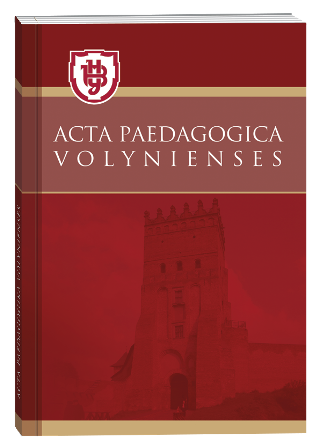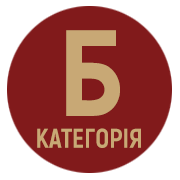DEVELOPMENT OF CREATIVE ABILITIES OF PRESCHOOL CHILDREN BY MEANS OF ARTISTIC AND SPEECH ACTIVITY
DOI:
https://doi.org/10.32782/apv/2021.5.7Keywords:
preschoolers, creativity, creative abilities, talent, artistic and speech activityAbstract
The article analyzes the problem of development of creative abilities of preschoolers by means of fiction. The key positions of the research have been clarified. First of all, it is noted that in philosophical concepts, creativity is seen as selfrealization of the individual. Children's creativity is understood as the creation by a child of a product that is subjectively significant for him. Children's creativity is characterized by the fact that the child responds emotionally, values the work through the artistic word, creative work in various activities. Literary creativity is understood as the child's ability to compose stories, stories and fairy tales. The phenomenon of “creativity” is defined differently. In particular, the ability to find solutions in unusual situations; focus on discovering new and the ability to deeply understand their experience; synthesis of personality traits, which are characterized by the degree of compliance of a certain type of creative activity with the requirements for it, and determine the effectiveness of such activities. Creative talent is seen as an individual creative motivational and social potential that allows you to get high results in one (or more) of the following areas: intelligence, creativity, social competence, artistic, psychological and biological capabilities. Talent is understood as a system of qualities and features that allows individuals to achieve outstanding success in the original implementation of creative activities. Creative abilities are brightly shown in the preschool childhood and develop in the course of specially organized training, in particular in literary, and art-speech activity closely connected with it. The connection between such components of artistic and speech activity as performing activity and creativity is especially strong. Creativity combines artistic, playful and cognitive activity of preschoolers. Specific favorable conditions should be created for the emergence and activation of children’s creative manifestations. The main means of semantic influence on the development of creative abilities of the child 's personality in artistic and speech activity are analyzed in the article. Artistic and speech activity has a valuable value for the development of creative abilities of preschool children, in particular for the development of literary creativity. We see prospects for further research in the study and testing of pedagogical conditions for the development of creative abilities of preschoolers in artistic and speech activities.
References
Богуш А.М. Мовленнєвий компонент дошкільної освіти. Одеса, 2004. 112 с.
Богуш А.М. Теоретичні засади художньо-мовленнєвої діяльності дітей дошкільного віку. Педагогіка і психологія. Київ, 1988. № 3. С. 112−121.
Богоявленськая Д.Б. Интеллектуальная активность как проблема творчества. Ростов : Изд-во Рост, 1983. 173 с.
Гавриш Н.В. Художнє слово і дитяче мовлення: Редакції загальнопедагогічних газет. Київ, 2005. 128 с.
Короткова Н. Художественная литература в образовательной работе с детьми старшего дошкольного возраста. Дошкольное воспитание. 2001. № 8. С. 33–35.
Моляко В.О. Творчий потенціал людини як психологічна проблема. Психологічна газета. 2005. № 6. С. 4–6.
Моляко В.А. Психология решения школьниками творческих задач. Киев : Рад. Школа, 1983. 101 с.
Монке О.С. Вплив художньо-мовленнєвої діяльності на розвиток творчих здібностей дошкільників. Науковий вісник. 2007. № 11. С. 229–233.
Монке О.С. Українська література для дітей дошкільного віку : навчальний посібник. Одеса, 2010. 350 с.
Приходченко К.І. Витоки творчості. Розробки уроків та позакласних заходів з розвитку творчих здібностей учнів : посібник. Донецьк : Сталкер, 1998. 416 с.
Теплов Б.М. Избранные труды. Москва, 1985. С. 214−248.







